begin quote from:
An electric car is an automobile that is propelled by one or more electric motors, using energy .... Thus, an electric car that derives its power from an on-board battery pack is a form .... California electric automaker Tesla Motors began development in 2004 on what .... Electric motors have flat torque curve down to zero speed.
Missing: lining | Must include: lining
Electric car
| Part of a series about |
| Sustainable energy |
|---|
 |
| Overview |
| Energy conservation |
| Renewable energy |
| Sustainable transport |
An electric car is an automobile that is propelled by one or more electric motors, using energy stored in rechargeable batteries. The first practical electric cars were produced in the 1880s.[1] Electric cars were popular in the late 19th century and early 20th century, until advances in internal combustion engines, electric starters in particular, and mass production of cheaper gasoline vehicles led to a decline in the use of electric drive vehicles.
From 2008, a renaissance in electric vehicle manufacturing occurred due to advances in batteries, illnesses and deaths due to air pollution,[2] and the desire to reduce greenhouse gas emissions.[3] Several national and local governments have established government incentives for plug-in electric vehicles, tax credits, subsidies, and other incentives to promote the introduction and adoption in the mass market of new electric vehicles, often depending on battery size, their electric range and purchase price. The current maximum tax credit allowed by the US Government is US$7,500 per car.[4] Compared with internal combustion engine cars, electric cars are quieter, have no tailpipe emissions, and lower emissions in general.[5] In January 2019 and updated in April, a Reuters analysis of 29 global automakers concluded that automakers are planning on spending $300 billion over next 5 to 10 years on electric cars, with 45% of that in China.[6]
Charging an electric car can be done at a variety of charging stations, these charging stations can be installed in both houses and public areas.[7] The two best selling electric cars so far, the Nissan Leaf and the Tesla Model S, have EPA-rated ranges reaching up to 243 km (151 miles) and 600 km (370 miles) respectively.[8][9][10] The Leaf is the best-selling highway-capable electric car ever with more than 400,000 units sold,[11] followed by the Tesla Model S with over 400,000 units sold worldwide by June 2019.[12][13][14][15][16]
As of December 2018, there were about 5.3 million light-duty all-electric and plug-in hybrid vehicles in use around the world.[17] Despite the rapid growth experienced, the global stock of plug-in electric cars represented just about 1 out of every 250 vehicles (0.40%) on the world's roads by the end of 2018.[18] The plug-in car market is shifting towards fully electric battery vehicles, as the global ratio between annual sales of battery BEVs and PHEVs went from 56:44 in 2012, to 60:40 in 2015, and rose to 69:31 in 2018.[19][20]
Contents
- 1Terminology
- 2History
- 3Economics
- 4Environmental aspects
- 5Performance
- 6Energy efficiency
- 7Safety
- 8Controls
- 9Batteries
- 10Electric vehicle charging patents
- 11Infrastructure
- 12Currently available electric cars
- 13Government subsidy
- 14EV plans from major manufacturers
- 15See also
- 16References
- 17External links
Terminology[edit]
Electric cars are a variety of electric vehicle (EV). The term "electric vehicle" refers to any vehicle that uses electric motors for propulsion, while "electric car" generally refers to highway-capable automobiles powered by electricity. Low-speed electric vehicles, classified as NEVs in the United States,[21] and as electric motorised quadricycles in Europe,[22] are plug-in electric-powered microcars or city cars with limitations in terms of weight, power and maximum speed that are allowed to travel on public roads and city streets up to a certain posted speed limit, which varies by country.
While an electric car's power source is not explicitly an on-board battery, electric cars with motors powered by other energy sources are typically referred to by a different name. An electric car carrying solar panels to power it is a solar car, and an electric car powered by a gasoline generator is a form of hybrid car. Thus, an electric car that derives its power from an on-board battery pack is a form of battery electric vehicle (BEV). Most often, the term "electric car" is used to refer to battery electric vehicles, but may also refer to plug-in hybrid electric vehicles (PHEV).
History[edit]
The invention of the first model electric predecessor vehicle is attributed to various people.[24] In 1828, the Hungarian Ányos Jedlik invented an early type of electric motor, and created a small model car powered by his new motor. Between 1832 and 1839, the Scot Robert Anderson built a crude electric-powered carriage, powered by non-rechargeable primary power cells.[25] In 1834, Vermont blacksmith Thomas Davenport built a similar contraption which operated on a short, circular, electrified track.[26] In the same year, Professor Sibrandus Stratingh of Groningen, the Netherlands and his assistant Christopher Becker from Germany created a small-scale electric car, powered by non-rechargeable primary cells.[27]
Other prototypes of electric cars were probably built before, but it was not until the batteries were improved by French inventors Gaston Planté (in 1865) and Camille Faure (in 1881) that electric cars really took off.[28]
In November 1881, Gustave Trouvé presented an electric car at the Exposition internationale d'Électricité de Paris.[29]
In 1884, over 20 years before the Ford Model T, Thomas Parker built a practical production electric car in London using his own specially designed high-capacity rechargeable batteries.[30][31][32] The Flocken Elektrowagen of 1888 was designed by German inventor Andreas Flocken.[33] Electric cars were among the preferred methods for automobile propulsion in the late 19th century and early 20th century, providing a level of comfort and ease of operation that could not be achieved by the gasoline cars of the time.[34] The electric vehicle stock peaked at approximately 30,000 vehicles at the turn of the 20th century.[35]
In 1897, electric cars found their first commercial use as taxis in Britain and the US. In London, Walter Bersey’s electric cabs were the first self-propelled vehicles for hire at a time when cabs were horse-drawn.[36] In New York City, a fleet of twelve hansom cabs and one brougham, based on the design of the Electrobat II, were part of a project funded in part by the Electric Storage Battery Company of Philadelphia.[37] During the 20th century, the main manufacturers of electric vehicles in the US were Anthony Electric, Baker, Columbia, Anderson, Edison, Riker, Milburn, Bailey Electric, Detroit Electric and others. Unlike gasoline-powered vehicles, the electric ones were less noisy, and did not require gear changes.[38][39]
Advances in internal combustion engines (ICE) in the first decade of the 20th century lessened the relative advantages of the electric car. Their much quicker refueling times, and cheaper production costs, made them more popular. However, a decisive moment was the introduction in 1912 of the electric starter motor which replaced other, often laborious, methods of starting the ICE, such as hand-cranking.[40]
Six electric cars held the land speed record.[41] The last of them was the rocket-shaped La Jamais Contente, driven by Camille Jenatzy, which broke the 100 km/h (62 mph) speed barrier by reaching a top speed of 105.88 km/h (65.79 mph) on 29 April 1899.
Modern electric cars[edit]
The emergence of metal-oxide-semiconductor (MOS) technology led to the development of modern electric road vehicles.[42] The MOSFET (MOS field-effect transistor, or MOS transistor), invented by Mohamed M. Atalla and Dawon Kahng at Bell Labs in 1959,[43][44] led to the development of the power MOSFET by Hitachi in 1969,[45] and the single-chip microprocessor by Federico Faggin, Marcian Hoff, Masatoshi Shima and Stanley Mazor at Intel in 1971.[46] The power MOSFET and the microcontroller, a type of single-chip microprocessor, led to significant advances in electric automobile technology. MOSFET power converters allowed operation at much higher switching frequencies, made it easier to drive, reduced power losses, and significantly reduced prices, while single-chip microcontrollers could manage all aspects of the drive control and had the capacity for battery management.[42] Another important technology that enabled modern highway-capable electric cars is the lithium-ion battery,[47] invented by John Goodenough, Rachid Yazami and Akira Yoshino in the 1980s,[48] which was responsible for the development of electric cars capable of long-distance travel.[47]
In the early 1990s, CARB began a push for more fuel-efficient, lower-emissions vehicles, with the ultimate goal being a move to zero-emissions vehicles such as electric vehicles.[49][50] In response, automakers developed electric models, including the Chrysler TEVan, Ford Ranger EV pickup truck, GM EV1, and S10 EV pickup, Honda EV Plus hatchback, Nissan Altra EV miniwagon, and Toyota RAV4 EV. Both US Electricar and Solectria produced 3-phase AC Geo-bodied electric cars with the support of GM, Hughes, and Delco. These early cars were eventually withdrawn from the U.S. market.[51]
California electric automaker Tesla Motors began development in 2004 on what would become the Tesla Roadster (2008), which was first delivered to customers in 2008. The Roadster was the first highway legal serial production all-electric car to use lithium-ion battery cells, and the first production all-electric car to travel more than 320 km (200 miles) per charge.[52]
Tesla global sales passed 250,000 units in September 2017.[53][54] The Renault–Nissan–Mitsubishi Alliance achieved the milestone of 500,000 units electric vehicles sold in October 2017.[55] Tesla sold its 200,000th Model S in the fourth quarter of 2017.[12] Global Leaf sales passed 300,000 units in January 2018, keeping its record as the world's top selling plug-in electric car ever.[56] Tesla delivered its 100,000th Model 3 in October 2018.[57]
Many countries have set goals to ban the sales of gasoline and diesel powered vehicles in the future, notably; Norway by 2025, Denmark by 2030, China by 2030, India by 2030, Germany by 2030, France by 2040, and Britain by 2040 or 2050.[58][59][60] Similarly, more cities around the world have begun transitioning public transportation towards electric vehicles, than previously was the case.[61]
In July 2019, US based Motortrend automotive magazine awarded an electric car "ultimate car of the year".[62]
Economics[edit]
Total cost of ownership[edit]
As of 2019, electric cars are less expensive to run than comparable internal combustion engine cars due to the lower cost of maintenance and energy,[63] but cost more to buy new,[64] and there is uncertainty. Matthew Debord stated, "the cost-of-ownership analysis has to be seen as somewhat unpredictable today, mainly because ... we don’t know how much it will ultimately cost to replace batteries on ageing EVs."[65]
The more kilometers driven per year the more likely the total cost of ownership for an electric car will be less than for an equivalent ICE car. However this distance may not be achievable due to range limitations, recharging availability and time, and battery lifetime. It also varies by country depending on the taxes and subsidies on different types of energy and car, and in some countries it may vary by city as different cities within the country have different charges for entering the city with the same type of car, for example in the UK London charges ICE cars more than Birmingham.[2]
Purchase cost[edit]
Several national and local governments have established incentives to reduce the purchase price of electric cars and other plug-ins.[66][67][68][69]
When designing an electric vehicle, manufacturers may find that for low production, converting existing platforms may be cheaper as development cost is lower, however, for higher production, a dedicated platform may be preferred to optimize design, and cost.[70]
Almost 80% of electric vehicles in the U.S. are leased, while the lease rate for the country's entire fleet is about 30%.[71] In early 2018, electric compact cars of 2014 are worth 23 percent of their original sticker price, as comparable cars with combustion engines worth 41 percent.[71]
As of 2019 the electric vehicle battery is a significant part of the total cost of the car.
Operating cost[edit]
According to a study done in 2018, examining only fuel costs, the average fueling cost of an electric vehicle in the United States is $485 per year, as opposed to an internal combustion engine's $1,117 per year. Estimated gasoline costs varied from $993 in Alabama to $1,509 in Hawaii. Electric costs varied from $372 in Washington to $1,106 in Hawaii.[72]
Manufacturing cost[edit]
The main cost driver of an electric car is its battery. The price decreased from €600 per kWh in 2010, to €170 in 2017, to €100 in 2019.[73][74]
Environmental aspects[edit]
Electric cars have several benefits over conventional internal combustion engine automobiles, including a significant reduction of local air pollution, as they do not directly emit pollutants such as particulates (soot), volatile organic compounds, hydrocarbons, carbon monoxide, ozone, lead, and various oxides of nitrogen.[75][76][77]
Depending on the production process and the source of the electricity to charge the vehicle, emissions may be partly shifted from cities to the material transportation, production plants and generation plants.[49] The amount of carbon dioxide emitted depends on the emissions of the electricity source, and the efficiency of the vehicle. For electricity from the grid, the emissions vary significantly depending on your region, the availability of renewable sources and the efficiency of the fossil fuel-based generation used.[78][79][80]
The same is true of ICE vehicles. The sourcing of fossil fuels (oil well to tank) causes further damage and use of resources during the extraction and refinement processes, including high amounts of electricity.
The cost of installing charging infrastructure has been estimated to be repaid by health cost savings in less than 3 years.[81]
In December 2016, Nissan reported that Leaf owners worldwide achieved the milestone of 3 billion kilometers (1.9 billion miles) driven collectively through November 2016.[82]
Lithium availability[edit]
The examples and perspective in this section may not represent a worldwide view of the subject. (March 2019) (Learn how and when to remove this template message)
|
It is estimated that there are sufficient lithium reserves to power 4 billion electric cars.[85][86] Most electric cars use a lithium-ion battery and an electric motor which uses rare-earth elements. The demand for lithium, heavy metals, and other elements (such as neodymium, boron and cobalt) required for the batteries and powertrain is expected to grow significantly due to the future sales increase of plug-in electric vehicles in the mid and long term.[87][88] Some of the largest world reserves of lithium and other rare metals are located in countries with strong resource nationalism, unstable governments or hostility to various overseas interests, raising concerns about the risk of replacing dependence on foreign oil with a new dependence on hostile countries to supply strategic materials.[83][87][88][89]
Performance[edit]
Acceleration and drivetrain design[edit]
Electric motors can provide high power-to-weight ratios, batteries can be designed to supply the currents needed to support these motors. Electric motors have flat torque curve down to zero speed. For simplicity and reliability, many electric cars use fixed-ratio gearboxes and have no clutch.
Many electric cars have higher acceleration than average internal combustion cars, largely due to reduced drivetrain frictional losses, and the more quickly available torque of an electric motor.[91] However Neighborhood Electric Vehicles (NEVs) may have a low acceleration due to their relatively weak motors.
Electric vehicles can also use a direct motor-to-wheel configuration which increases the available power. Having motors connected directly to each wheel simplifies using the motor for both propulsion and braking, increasing traction.[failed verification][92][93][94] Electric vehicles that lack an axle, differential, or transmission can have less drive-train inertia.
For example, the Venturi Fetish delivers supercar acceleration despite a relatively modest 220 kW (300 hp), and top speed of around 160 km/h (100 mph). Some DC-motor-equipped drag racer EVs have simple two-speed manual transmissions to improve top speed.[95] The 2008 Tesla Roadster 2.5 Sport can accelerate from 0 to 97 km/h (0 to 60 mph) in 3.7 seconds with a motor rated at 215 kW (288 hp).[96] Tesla Model S P100D (Performance / 100kWh / 4-wheel drive) is capable of 2.28 seconds for 0–60 mph at a price of $140,000.[97] As of May 2017, the P100D is the second quickest production car ever built, taking only 0.08 seconds longer for 0–97 km/h (0–60 mph), compared to a $847,975 Porsche 918 Spyder.[98] The concept electric supercar Rimac Concept One claims it can go from 0–97 km/h (0–60 mph) in 2.5 seconds. Tesla claims the upcoming Tesla Roadster could go 0–60 mph (0–97 km/h) in 1.9 seconds.[99]
Energy efficiency[edit]
Internal combustion engines have thermodynamic limits on efficiency, expressed as fraction of energy used to propel the vehicle compared to energy produced by burning fuel. Gasoline engines effectively use only 15% of the fuel energy content to move the vehicle or to power accessories, and diesel engines can reach on-board efficiency of 20%, while electric vehicles have efficiencies of 69-72%, when counted against stored chemical energy, or around 59-62%, when counted against required energy to recharge.[100][101]
Electric motors are more efficient than internal combustion engines in converting stored energy into driving a vehicle. However, they are not equally efficient at all speeds. To allow for this, some cars with dual electric motors have one electric motor with a gear optimised for city speeds and the second electric motor with a gear optimised for highway speeds. The electronics select the motor that has the best efficiency for the current speed and acceleration.[102] Regenerative braking, which is most common in electric vehicles, can recover as much as one fifth of the energy normally lost during braking.[49][100] Efficiency increases when renewable electricity is used[103]
Cabin heating and cooling[edit]
While heating can be provided with an electric resistance heater, higher efficiency and integral cooling can be obtained with a reversible heat pump. PTC junction cooling[104] is also attractive for its simplicity — this kind of system is used, for example, in the 2008 Tesla Roadster.
To avoid using part of the battery's energy for heating and thus reducing the range, some models allow the cabin to be heated while the car is plugged in. For example, the Nissan Leaf, the Mitsubishi i-MiEV, Renault Zoe and the Tesla Model S and 3 can be pre-heated while the vehicle is plugged in.[105][106][107]
Some electric cars, for example the Citroën Berlingo Electrique, use an auxiliary heating system (for example gasoline-fueled units manufactured by Webasto or Eberspächer) but sacrifice "green" and "Zero emissions" credentials. Cabin cooling can be augmented with solar power external batteries and USB fans or coolers, or by automatically allowing outside air to flow through the car when parked. Two models of the 2010 Toyota Prius include this feature as an option.[108]
Safety[edit]
The safety issues of BEVs are largely dealt with by the international standard ISO 6469. This document is divided in three parts dealing with specific issues:
- On-board electrical energy storage, i.e. the battery
- Functional safety means and protection against failures
- Protection of persons against electrical hazards.
Risk of fire[edit]
Like their internal combustion engine (ICE) counterparts, electric vehicle batteries can catch fire after a crash or mechanical failure.[109] Plug-in electric vehicle fire incidents have occurred, albeit less per mile than ICE vehicles.[110] The first modern crash-related fire was reported in China in May 2012, after a high-speed car crashed into a BYD e6 taxi in Shenzhen.[111] The second reported incident occurred in the United States on October 1, 2013, when a Tesla Model S caught fire over ten minutes after the electric car hit metal debris on a highway in Kent, Washington state, and the debris punctured one of 16 modules within the battery pack.[112][113] A third reported fire occurred on October 18, 2013 in Merida, Mexico. In this case the vehicle was being driven at high speed through a roundabout and crashed through a wall and into a tree. The fire broke out several minutes after the driver exited the vehicle.
In the United States, General Motors ran in several cities a training program for firefighters and first responders to demonstrate how to safely disable the Chevrolet Volt's powertrain and its 12 volt electrical system. The Volt's high-voltage system is designed to shut down automatically in the event of an airbag deployment, and to detect a loss of communication from an airbag control module.[114][115] GM also made available an Emergency Response Guide for the 2011 Volt for use by emergency responders. The guide also describes methods of disabling the high voltage system and identifies cut zone information.[116] Nissan also published a guide for first responders that details procedures for handling a damaged 2011 Leaf at the scene of an accident, including a manual high-voltage system shutdown, rather than the automatic process built-in the car's safety systems.[117][118]
Vehicle safety[edit]
The weight of the batteries themselves usually makes an EV heavier than a comparable gasoline vehicle, in a collision, the occupants of a heavy vehicle will on average, suffer fewer and less serious injuries than the occupants of a lighter vehicle; therefore, the additional weight brings safety benefits (to the occupant)[119] despite having a negative effect on the car's performance.[120] Depending on where the battery is located, it may lower the center of gravity, increasing driving stability, lowering the risk of an accident through loss of control. An accident in a 2,000 lb (900 kg) vehicle will on average cause about 50% more injuries to its occupants than a 3,000 lb (1,400 kg) vehicle.[121]
Some electric cars use low rolling resistance tires, which typically offer less grip than normal tires.[122][123][124] The Insurance Institute for Highway Safety in America had condemned the use of low speed vehicles and "mini trucks," called NEVs when powered by electric motors, on public roads.[125] Mindful of this, several companies (Tesla Motors, BMW, Uniti) have succeeded in keeping the body light, while making it very strong.[126]
Controls[edit]
As of 2018, most electric cars have similar driving controls to that of a car with a conventional automatic transmission. Even though the motor may be permanently connected to the wheels through a fixed-ratio gear and no parking pawl may be present, the modes "P" and "N" are often still provided on the selector. In this case the motor is disabled in "N" and an electrically actuated hand brake provides the "P" mode.
In some cars the motor will spin slowly to provide a small amount of creep in "D", similar to a traditional automatic.[127]
When an internal combustion vehicle's accelerator is released, it may slow by engine braking depending on the type of transmission, and mode. An EV would coast when the accelerator is similarly released, if it was not for regenerative braking which mimics the familiar response, and recharges the battery to an extent. Regenerative brakings also reduces the use of the conventional brakes just as engine braking would in an internal combustion vehicle, reducing brake wear and maintenance costs.
Batteries[edit]
Lithium-based batteries are often used for their high power and energy density, although they eventually wear out.[128] Other battery types, such as nickel metal hydride (NiMH), which have a poorer power-to-weight ratio than lithium ion, but are cheaper. Batteries with different chemical compositions are in development such as zinc-air battery which could be much lighter.
Range[edit]
This section needs to be updated. (March 2019)
|
The range of an electric car depends on the number and type of batteries used, and as with all vehicles, the weight and type of vehicle, performance requirements, and the weather.[131]
The reported range of production electric vehicles in 2017 ranged from 100 km (60 miles) (Renault Twizy) to 540 km (340 miles) (Tesla Model S 100D).[132] Real-world range tests conducted by What Car in early 2019 found that the highest real-world range was 417 km (259 miles) (Hyundai Kona).[133]
The majority of electric cars are fitted with a display of expected range. This may take into account many factors of how the vehicle is being used, and what the battery is powering. However, since factors can vary over the route, the estimate can vary from the actual achieved range. The display allows the driver to make informed choices about driving speed and whether to stop at a charging point en route. Some roadside assistance organizations offer charge trucks to recharge electric cars in case of emergency.[134]
A study in 2016 stated that 87% of US vehicle-days can be met by current affordable electric cars.[135][136]
Charging[edit]
This section needs to be updated. (March 2019)
|
Electric cars are typically charged overnight from a charging station installed in the owner's house, or from faster charging stations found in businesses and public areas.[137]
An overnight charge of 8 hours will only give about a 40-mile charge with a 120-volt outlet whereas a 240 volt outlet would give around 180 miles in the same amount of time.[138]
Within each major region of the world, electric car charging stations are essentially universal across car and charger brands, and plugging in a charger into an electric car will charge the car at the fastest rate that car and charger can support. A notable exception are Tesla cars and charging stations, which use their own proprietary chargers, but adapters costing a few hundred dollars can allow use of around 75% of non-Tesla stations.[139] The adapters may also allow non-Tesla vehicles to charge at some Tesla stations other than level 3 Superchargers, assuming Tesla does not try to prevent it.[139]
Some companies have been experimenting with battery swapping to eliminate delay while charging.[140] A “Super Fast” charging location will currently charge most cars to around 80% in 45–50 minutes. The final 20% – as with a mobile phone – takes longer, because the systems slow to safely fill the battery and avoid any risks.[141]
Hybrid vehicles[edit]
Some electric vehicles have built in generators, these are considered a type of hybrid vehicle.
Lifespan[edit]
As with all lithium-ion batteries, electric vehicle batteries may degrade over long periods of time, especially if they are frequently overcharged, however, this may take at least several years before being noticeable.[142]
However, Nissan stated in 2015 that thus far only 0.01 percent of batteries had to be replaced because of failures or problems, and then only because of externally inflicted damage. The vehicles that had already covered more than 200,000 km (124,274 mi), have no problems with the battery.[143]
Future[edit]
- Autonomous park-and-charge
Volkswagen, in collaboration with six partners, is developing an EU research project that is focused on automating the parking and charging of electric vehicles. The objective of this project is to develop a smart car system that allows for autonomous driving in designated areas (e.g. valet parking, park and ride) and can offer advanced driver support in urban environments.[144] Tesla has shown interest in making an arm that automatically charges their vehicles.[145]
- Other methods of energy storage
Experimental supercapacitors and flywheel energy storage devices offer comparable storage capacity, faster charging, and lower volatility. They have the potential to overtake batteries as the preferred rechargeable storage for EVs.[146][147] The FIA included their use in its sporting regulations of energy systems for Formula One race vehicles in 2007 (for supercapacitors) and 2009 (for flywheel energy storage devices).
- Solar cars
Solar cars are electric vehicles powered completely or significantly by direct solar energy, usually, through photovoltaic (PV) cells contained in solar panels that convert the sun's energy directly into electric energy, usually used to charge a battery.
Electric vehicle charging patents[edit]
Qualcomm, Hyundai, Ford, and Mitsubishi are the top patent holders of the close to 800 electric vehicle charging patents filed between 2014 and 2017.[148] A majority of patents on electric vehicle charging were filed in Japan between 2014 and 2017. It is followed by the US and then by China.[149]
Infrastructure[edit]
Charging station[edit]
Battery electric vehicles are most commonly charged from the power grid overnight at the owner's house, provided they have their own charging station. The electricity on the grid is in turn generated from a variety of sources; such as coal, hydroelectricity, nuclear and others. Power sources such as photovoltaic solar cell panels, micro hydro or wind may also be used and are promoted because of concerns regarding global warming.
Charging stations can have a variety of different speeds of charging, with slower charging being more common for houses, and more powerful charging stations on public roads and areas for trips.[150] The BMW i3 can charge 0–80% of the battery in under 30 minutes in rapid charging mode.[151] The superchargers developed by Tesla Motors provided up to 130 kW of charging, allowing a 300-mile charge in about an hour.[152]
Connectors[edit]
Most electric cars have used conductive coupling to supply electricity for recharging after CARB settled on the SAE J1772-2001 standard[153] as the charging interface for electric vehicles in California in June 2001.[154] In Europe, the ACEA has decided to use the Type 2 connector from the range of IEC_62196 plug types for conductive charging of electric vehicles in the European Union, as the Type 1 connector (SAE J1772-2009) does not provide for three-phase charging.[155]
Another approach is inductive charging using a non-conducting "paddle" inserted into a slot in the car. Delco Electronics developed the Magne Charge inductive charging system around 1998 for the General Motors EV1 which was also used for the Chevrolet S-10 EV and Toyota RAV4 EV vehicles.
Vehicle-to-grid: uploading and grid buffering[edit]
During peak load periods, when the cost of generation can be very high, electric vehicles could contribute energy to the grid. These vehicles can then be recharged during off-peak hours at cheaper rates while helping to absorb excess night time generation. Here the batteries in the vehicles serve as a distributed storage system to buffer power.[156]
Currently available electric cars[edit]
Highway capable[edit]
According to Bloomberg New Energy Finance, as of December 2018, there were almost 180 models of highway-capable all-electric passenger cars and utility vans available for retail sales globally.[157]
The Renault–Nissan–Mitsubishi Alliance is the world's leading all-electric vehicle manufacturer. Since 2010, the Alliance's global all-electric vehicle sales totaled almost 725,000 units, including those manufactured by Mitsubishi Motors through December 2018, now part of the Alliance.[158] Its best selling Nissan Leaf was the world's top selling plug-in electric car in 2013 and 2014.[159]
Tesla is the second all-time best-selling pure electric passenger car manufacturer, with over 530,000 electric cars delivered worldwide through December 2018.[160] After 10 years in the market, Tesla was the world's top selling plug-in electric passenger car manufacturer in 2018, both as a brand and by automotive group, with 245,240 units delivered representing a market share of 12% of all plug-in cars sold globally in 2018.[19][161][162] Its Model S was the world's top selling plug-in electric car in 2015 and 2016,[159][163][164][12] and its Model 3 was the world's best selling plug-in electric car in 2018.[19]
The world's all-time top selling highway legal electric car is the Nissan Leaf with global sales of over 400,000 units by March 2019,[11] followed by the Tesla Model S with global sales of 263,500 cars as of December 2018.[12][13][14][15][16] The Renault Kangoo Z.E. utility van is the leader of the light-duty all-electric segment with global sales of 38,527 units through December 2018.[165][166]
The following table lists the all-time best-selling highway-capable all-electric passenger cars with cumulative global sales of around or more than 100,000 units since their inception through December 2018:
| Model | Market launch | Global sales | Cumulative sales through | Sources | |
|---|---|---|---|---|---|
| Since inception | 2018 | ||||
| Nissan Leaf | Dec 2010 | +380,000 | 87,149 | Dec 2018 | [19][167] |
| Tesla Model S | Jun 2012 | 263,504 | 50,630 | Dec 2018 | [12][13][14][15][16] |
| BAIC EC-Series | Dec 2016 | 172,844(3) | 90,637 | Dec 2018 | [168] |
| Tesla Model 3 | Jul 2017 | 147,819 | 146,055 | Dec 2018 | [16][169][170][171] |
| Renault Zoe | Dec 2012 | 133,645 | 40,508 | Dec 2018 | [165][166] |
| BMW i3 | Nov 2013 | 133,397(2) | 34,829 | Dec 2018 | [159][172][173][174][175][176] |
| Tesla Model X | Sep 2015 | 120,739 | 48,680 | Dec 2018 | [13][14][15][16][159][177][178][179][180] |
| Chery eQ | Nov 2014 | ~119,000(3) | 46,967 | Dec 2018 | [181][182][183] |
| Notes: (1) Vehicles are considered highway-capable if able to achieve at least a top speed of 100 km/h (62 mph). (2) BMW i3 sales includes the REx variant (split is not available). (3) Sales in main China only. | |||||
Retrofitted electric vehicles[edit]
Any car can be converted to an electric vehicle using plug and play kits of making custom solutions. The conversion of internal combustion engine cars to electric cars is called Retrofitted Electric Vehicles.
Electric cars by country[edit]
Global sales of highway legal plug-in electric passenger cars and light utility vehicles achieved the one million milestone in September 2015, almost twice as fast as hybrid electric vehicles (HEV).[184][185] Cumulative global sales of light-duty all-electric vehicles reached one million units in September 2016.[186][187]
Cumulative global sales of plug-in passenger cars passed 2 million in December 2016,[188] the 3 million mark in November 2017,[189] and the 5 million milestone in December 2018.[17] Despite the rapid growth experienced, the global stock of plug-in electric cars represented just about 1 out of every 250 vehicles (0.40%) on the world's roads by the end of 2018.[18] As of December 2018, the global stock of pure electric passenger cars and light commercial vehicles (utility vans) totaled about 3.45 million units, representing 65% of all light-duty plug-in vehicles on the world's roads.[17][190]
All-electric cars have oversold plug-in hybrids for several years, and by the end of 2018, the plug-in market continues to shift towards fully electric battery vehicles. The global ratio between annual sales of battery BEVs and PHEVs went from 56:44 in 2012, to 60:40 in 2015, and rose to 69:31 in 2018.[19][20]
Government subsidy[edit]
Several countries have established grants and tax credits for the purchase of new electric cars, often depending on battery size. The U.S. offers a federal income tax credit up to US$7,500,[69] and several states have additional incentives.[195] The UK offers a Plug-in Car Grant up to a maximum of GB£4,500 (US$5,929).[196] The U.S. government also pledged US$2.4 billion in federal grants for the development of advanced technologies for electric cars and batteries,[197] despite the fact that overall sales are not increasing at the expected rate.[198]
As of April 2011, 15 European Union member states provide economic incentives for the purchase of new electrically chargeable vehicles, which consist of tax reductions and exemptions, as well as of bonus payments for buyers of all-electric and plug-in hybrid vehicles, hybrid electric vehicles, and some alternative fuel vehicles.[199][200]
EV plans from major manufacturers[edit]
Volkswagen plans 27 electric vehicles by 2022, on a dedicated EV platform dubbed "Modular Electric Toolkit" and initialed as MEB.[201] Ford will use Volkswagen's Modular Electric Toolkit to design and build its own fully electric vehicles starting in 2023.[202]
Toyota has developed a global EV platform named e-TNGA that can accommodate a three-row SUV, sporty sedan, small crossover or a boxy compact.[203] Toyota and Subaru will release a new EV on a shared platform.[204] It will be about the size of a Subaru Forester or Toyota RAV4.
As of March 2019, BMW plans 12 all electric vehicles by 2025, using a fifth-generation electric powertrain architecture, which will save weight and cost and increase capacity.[205]
Mercedes plans to invest $23 billion on battery cells through 2030 and have 10 all electric vehicles by 2022.[206][207]
In January 2019, GM announced that it plans to make Cadillac its lead electric vehicle brand starting in 2021.[208] GM's “BEV3” next-generation electric vehicle platform is designed to be flexible for use in many different vehicle types, such as front, rear and all-wheel drive configurations.[209]
On 23 October 2019, Hyundai announced it plans 16 new electric vehicles by 2025.[213]


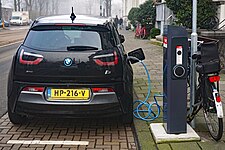


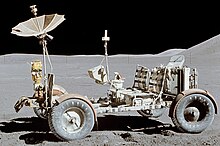
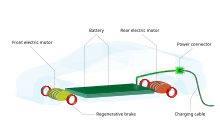



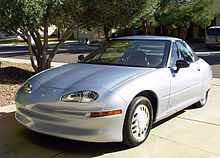
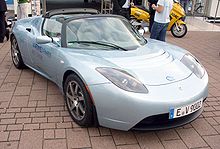


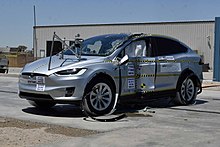
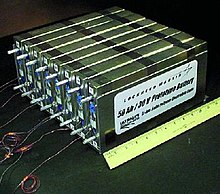
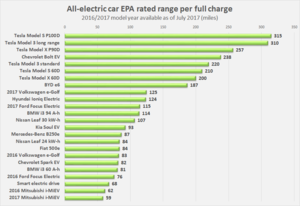




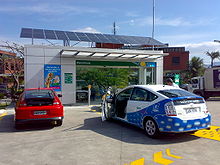





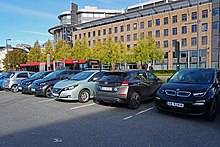


No comments:
Post a Comment